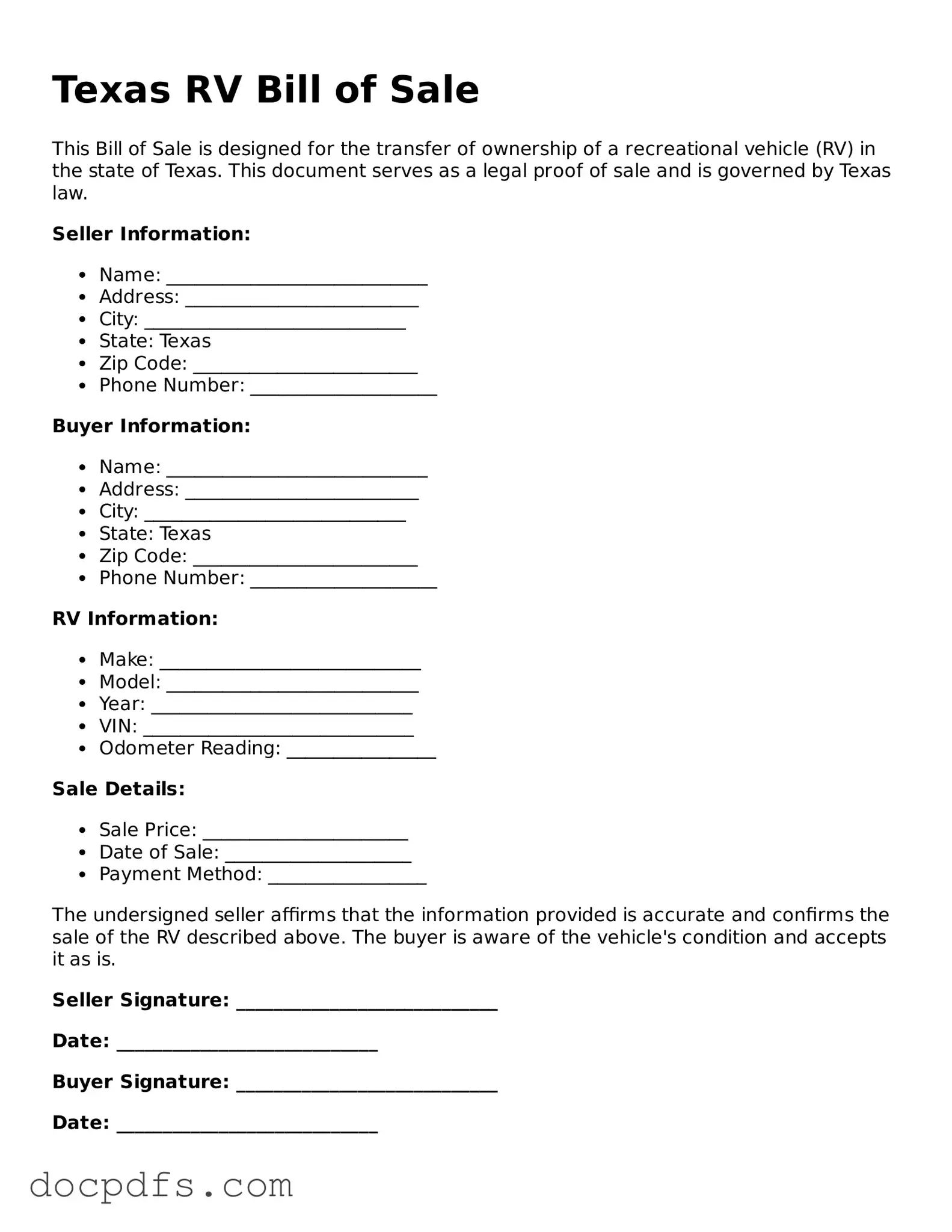What is a Texas RV Bill of Sale?
A Texas RV Bill of Sale is a legal document that serves as proof of the sale and transfer of ownership of a recreational vehicle (RV) in the state of Texas. It includes essential details about the transaction, such as the buyer and seller's information, the RV's specifications, and the sale price. This document is important for both parties to establish a clear record of the sale.
Why do I need a Bill of Sale for my RV?
The Bill of Sale is crucial for several reasons:
-
It provides legal protection for both the buyer and seller.
-
It helps in the registration process with the Texas Department of Motor Vehicles (DMV).
-
It serves as proof of ownership and can be useful for insurance purposes.
-
It may be required by financial institutions if the RV is financed.
The Texas RV Bill of Sale typically includes the following information:
-
Full names and addresses of the buyer and seller.
-
Description of the RV, including make, model, year, and Vehicle Identification Number (VIN).
-
Sale price of the RV.
-
Date of the transaction.
-
Signatures of both the buyer and seller.
Is a Bill of Sale required in Texas for RV transactions?
While a Bill of Sale is not legally required for all RV transactions in Texas, it is highly recommended. Having this document can simplify the registration process and provide evidence of ownership. Additionally, some dealerships and financial institutions may require it as part of their procedures.
Can I create my own RV Bill of Sale?
Yes, you can create your own RV Bill of Sale. It is important to ensure that it contains all the necessary information mentioned earlier. There are also templates available online that can help guide you in drafting a comprehensive document. However, using a standardized form can help ensure compliance with Texas regulations.
How do I complete the Texas RV Bill of Sale?
To complete the Texas RV Bill of Sale, follow these steps:
-
Gather all necessary information about the buyer, seller, and RV.
-
Fill out the form accurately, ensuring all details are correct.
-
Both parties should review the document to confirm accuracy.
-
Sign and date the Bill of Sale in the presence of a witness if possible.
Do I need to have the Bill of Sale notarized?
Notarization of the Bill of Sale is not required in Texas, but it can add an extra layer of security and authenticity to the document. If both parties feel more comfortable having the Bill of Sale notarized, they can do so. This may also help in case of any disputes in the future.
What should I do with the Bill of Sale after the transaction?
After the transaction, both the buyer and seller should keep a copy of the Bill of Sale for their records. The buyer will need it for registering the RV with the Texas DMV and for insurance purposes. The seller may want to retain a copy as proof of the sale and to protect against any future claims related to the RV.
